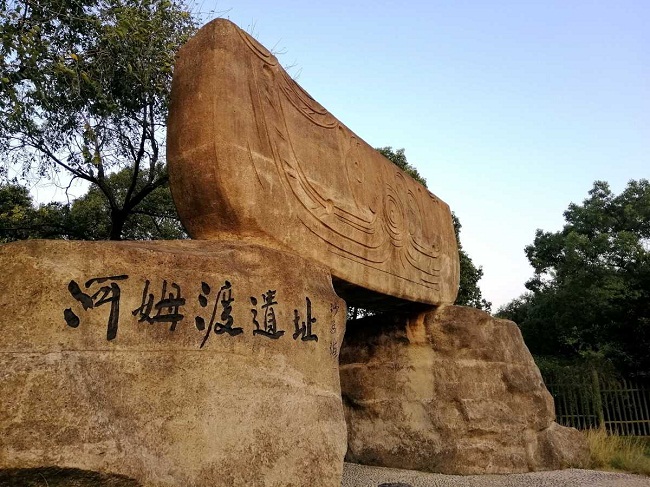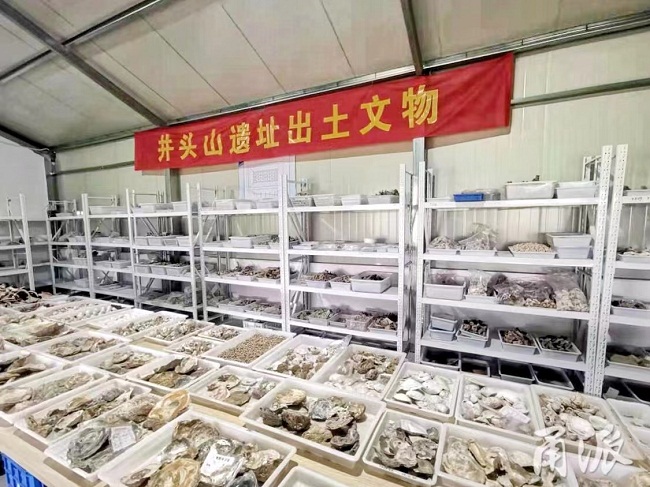Hemudu site listed among China's top 100 archaeological finds

The Hemudu Neolithic cultural site in Yuyao, Ningbo city. [Photo provided by He Qijun to cnnb.com.cn]
The Hemudu Neolithic cultural site in Yuyao, Ningbo city, East China's Zhejiang province has made the list of China's top 100 archaeological findings in the past century, according to the third China Archaeological Congress held on Oct 18 in Henan province.
Discovered in 1973, the Hemudu Neolithic cultural site dates back 7,000 years ago and includes three settlement sites – Hemudu, Tianluoshan, and Zishan - where nearly 7,000 relics including daily necessities and decorative crafts were unearthed.
The cultural site showcases the prosperous scenes during the matriarchal period and demonstrates the development of agriculture, architecture, textile, and art in primitive Chinese society.

Unearthed relics from the Jingtoushan site, which was discovered in 2020 in the Hemudu cultural site. [Photo/cnnb.com.cn]
Ningbo started applying for the Hemudu cultural site to be recognized as a national archaeological site park in 2018.
Covering 29 provinces, autonomous regions, municipalities, as well as the Hong Kong Special Administrative Region and the Taiwan region, these archaeological sites are divided into eight categories based on the historical periods in which they originated, spanning from the Paleolithic period to the Ming and Qing dynasties (1368-1911). Thirty-three of them, the largest in number, fall under the category of the Neolithic period.

 China welcomes global travelers with open arms
China welcomes global travelers with open arms
 Kharitonova's running story in Ningbo
Kharitonova's running story in Ningbo
 Voices from starting line
Voices from starting line



